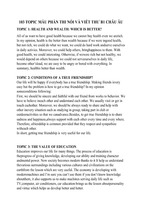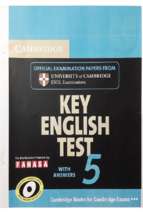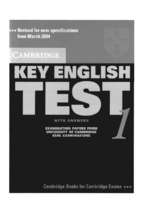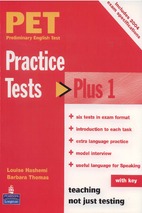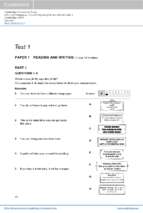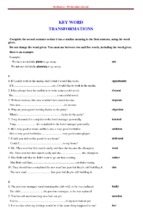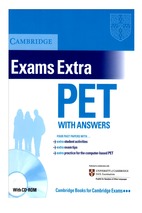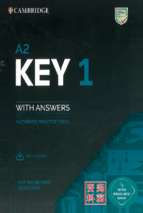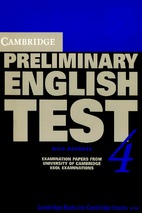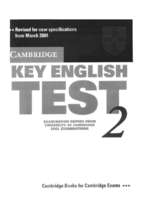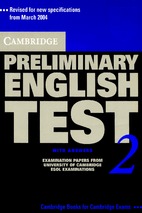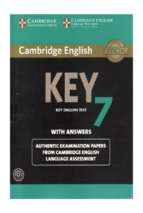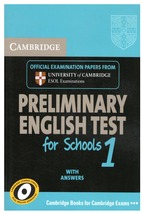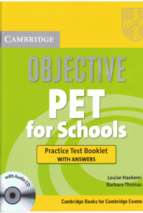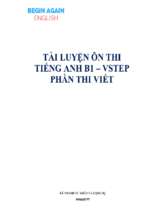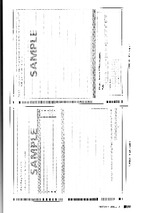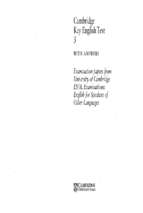VIETNAM NATIONAL UNIVERSITY, HANOI
VIETNAM JAPAN UNIVERSITY
THAI TRONG NGHIA
ASSESSMENT OF ADATIVE CAPACITY OF
AQUACULTURE HOUSEHOLDS TO
CLIMATE CHANGE IN CHO MOI DISTRICT,
AN GIANG PROVINCE, VIETNAM
MASTER’S THESIS
i
PLEDGE
I assure that this thesis is the result of my own research and has not been published.
The use of other research‟s results and other documents must comply with the
regulations. The citations and references to documents, books, research paper, and
websites must be in the list of references of the thesis.
Author of the thesis
THAI TRONG NGHIA
ii
TABLE OF CONTENTS
PLEDGE................................................................................................................................... i
TABLE OF CONTENTS ........................................................................................................ ii
LIST OF TABLES ................................................................................................................. iv
LIST OF FIGURES..................................................................................................................v
LIST OF ABBREVIATION ................................................................................................. vii
ACKNOWLEDGEMENT ................................................................................................... viii
FOREWORD ......................................................................................................................... ix
CHAPTER 1. INTRODUCTION ............................................................................................1
1.1 Research issues ...................................................................................................................1
1.2 Research questions and objectives, and hypothesis ...........................................................4
1.2.1 Research questions ..........................................................................................................4
1.2.2 Research objectives .........................................................................................................4
1.2.3. Hypothesis ......................................................................................................................4
1.3 Background of the Study....................................................................................................5
1.3.1 Concepts ..........................................................................................................................5
1.3.2 Research history ..............................................................................................................8
1.4 Study Area ........................................................................................................................16
1.4.1 Natural characteristic ...................................................................................................16
1.4.2 Socio-economic and environmental characteristics .....................................................19
1.4.3 Characteristics of climate change and natural disaster of Cho Moi district ...............23
1.4.4 Characteristics of aquaculture activity in Cho Moi district .........................................29
CHAPTER 2. METHODOLOGY .........................................................................................31
2.1 Research approach ...........................................................................................................31
2.2 Research methods.............................................................................................................34
2.2.1 Secondary data ..............................................................................................................34
2.2.2 Establishing and developing a set of AC indicators .....................................................35
2.2.3 Data collection ..............................................................................................................37
2.2.4 Data analysis .................................................................................................................42
CHAPTER 3. RESULTS AND DISCUSSION .....................................................................44
3.1 General information about the study areas ......................................................................44
3.2 Characteristics of economy, society and environment of households .............................49
3.2.1 Economic characteristic................................................................................................49
3.2.2 Social characteristic......................................................................................................52
3.2.3 Environmental characteristic ........................................................................................53
3.2.4 Climate change adaptation characteristics ..................................................................65
3.3 Assessment of AC of aquaculture households .................................................................70
ii
3.3.1 Overall AC assessment ..................................................................................................70
3.3.2 Assessment of economic component .............................................................................73
3.3.3. Assessment of social component ..................................................................................74
3.3.4. Assessment of environmental component .....................................................................75
3.3.5. Assessment of CC adaptation component ....................................................................76
CHAPTER 4. RECOMMENDATIONS TO INCREASE LOW ADAPTIVE
CAPACITY INDICATORS OF AQUACULTURE HOUSEHOLDS TO CLIMATE
CHANGE IN CHO MOI DISTRICT .....................................................................................78
4.1 Overview ..........................................................................................................................78
4.2 Solutions to increase AC of aquaculture households in Cho Moi district .......................78
4.2.1 Recommendations for management solutions for the government ...............................78
4.2.2 Recommendations for increasing autonomous adaptation for households ..................81
4.3 Technological recommendation for increasing AC of aquaculture households ..............82
4.3.1 RAS introduction ...........................................................................................................83
4.3.2 RAS strengths ................................................................................................................86
Chapter 5. CONCLUSIONS ..................................................................................................87
REFERENCES .......................................................................................................................89
APPENDIX ............................................................................................................................94
iii
LIST OF TABLES
Table 1.1 Economic structure value of Cho Moi during the phase of 2014-2018 ....20
Table 2.1 Set of indicators to assess AC of aquaculture households in Cho Moi ..355
Table 2.2 the number of aquaculture households was randomly chosen for data
collection in Cho Moi district ...................................................................................37
Table 2.3 Parameters of water quality were directly measured at study sites ..........39
Table 2.4 The number of times to measure water samples at the study sites ...........41
Table 3.1. Average area and yield of aquaculture households at the study sites ......48
Table 3.2 Profit margin of each aquaculture type at study areas ..............................49
Table 3.3 SWOT matrix to analyze strengths, weaknesses, opportunities and
challenges of each aquaculture system .....................................................................69
iv
LIST OF FIGURES
Figure 1.1 Geographical location and natural condition map of Cho Moi district, An
Giang .........................................................................................................................17
Figure 1.2 A structure of the working-age population (left) and structure of
population capable of work in economic sectors (right) ...........................................21
Figure 1.3 Water surface of Hau river (left) and Tien river (right) in flood season .22
Figure 1.4 Flooding peaks during 1998-2019 phase were measured at upstream and
downstream stations in An Giang province ..............................................................24
Figure 1.5 The map of storm and depression trajectories impacted An Giang during
the phase of 1951-2015 .............................................................................................27
Figure 1.6 A landslide scene of a riverside resident along the Vam Nao river, Cho
Moi district, An Giang ..............................................................................................29
Figure 1.7 Profit margin of pangasius households in the phase of 2007-2012 was
proportionate with fluctuated peaks of Tien and Hau River in An Giang ................30
Figure 2.1 Cause and effect chain approach in climate change ................................31
Figure 2.2 Study framework was applied to assess AC of aquaculture households .34
Figure 2.3 Residents on floating house was interviewed for data collection............38
Figure 2.4 The methods for the water sampling at inlet and outlet point .................40
Figure 2.5 Water samples were collected at the study sites ......................................41
Figure 3.1. The three aquaculture systems located in 6 commutes are shown on
maps of the study sites (red circle) ............................................................................44
Figure 3.2. Popular aquaculture systems in Cho Moi district ...................................46
Figure 3.3 Comparison of average members, labors and female labors between
aquaculture types and Cho Moi district ....................................................................47
Figure 3.4 Comparison of average household income and income per capita
between aquaculture systems and Cho Moi district ..................................................48
Figure 3.5 The scalability of aquaculture types at study areas .................................53
Figure 3.6 Waste treatment system of cement/rubber tank (left) and waste effluent
of floating house (right) at study sites. ......................................................................54
Figure 3.7 pH indexes of 3 systems were measured at the 3 different points...........56
Figure 3.8 DO content of 3 systems was measured at the three different points .....58
Figure 3.9 Temperature value of 3 systems was measured at 3 different points ......59
Figure 3.10 COD content of 3 systems were measured at the 3 different points .....61
Figure 3.11 NH4-N content of 3 systems were measured at the 3 different points ...60
Figure 3.12 PO4-P content of 3 systems measured at the three different points .......65
Figure 3.13 Quantities of solutions by model for CC adaptation and resilience to a
shortage of water, inundation in flood season and extreme events...........................68
v
Figure 3.14 The result of AC assessment at different systems of aquaculture .........71
Figure 3.15 The result of overall AC assessment of households in Cho Moi district
...................................................................................................................................70
Figure 3.16 The assessment results show indicators increase/decrease AC. ............70
Figure 3.17 AC assessment of economic indicators by aquaculture systems ...........73
Figure 3.18 AC assessment of social indicators by aquaculture systems .................74
Figure 3.19 AC assessment of environmental indicators by aquaculture systems ...75
Figure 3.20 AC assessment of CC adaptation component by aquaculture systems .77
Figure 4.1 The survey result of household‟s anticipation for implementing RAS to
improve their current farming practices ....................................................................80
Figure 4.2 Diagram describes RAS operation ..........................................................84
Figure 4.3 The composition of a mechanical filtration system .................................85
Figure 4.4 Three layers of a bio filter are introduced to purify water quality ..........85
vi
LIST OF ABBREVIATION
CC
AC
VMD
SD
SDGs
RCP
SL
RAS
Climate Change
Adaptive Capacity
Vietnamese Mekong Delta
Sustainable development
Sustainable development goals
Representative concentration pathways
Sustainable Livelihood
Recirculating aquaculture system
vii
ACKNOWLEDGEMENT
The master thesis "Assessment of the Adaptive Capacity of Aquaculture
Households to Climate Change in Cho Moi District, An Giang Province" was
completed at the program of Climate Change and Development, Vietnam Japan
University, Vietnam National University, Hanoi. I would like to thank all the
teachers and staff who have fully supported and gave valuable comments to this
thesis.
In particular, I would like to express my deepest thanks to the two
supervisors, Assoc. Dr. Koshi Yoshida and Dr. Nguyen Tai Tue who not only
closely guide me on the knowledge and experience but also share the skills for me
to become a professional researcher. In addition, I would like to thank some
individuals and units such as An Giang Rural Development Sub-Department, Mr.
Huynh Van Thai, Head of Water Resource and Climate Change Department, An
Giang Department of Natural Resources and Environment, Mr. Nguyen Van Tien Head of Snakehead Farming Association of Long Kien Commune- Cho Moi
District, Master Nguyen Thi Hao who have provided the necessary information and
created favorable conditions for me to complete this thesis. This thesis is hugely
supported by the national projects, entitled “Research, assessment the impacts of
climate change, disasters, human activities for proposing solutions, sustainable
development models in adjacent areas of Hau River”, code: BĐKH.39/16-20.
Once again, I would like to express my sincere gratitude to all of those for
their interest, encouragement, and motivation for me to fulfil my master's thesis.
The precious things that I learned during the course of doing my thesis will help me
a lot in my future research.
Sincerely!
viii
FOREWORD
Aquaculture in Vietnamese Mekong Delta (VMD) plays important role in
Vietnam, its population as well. However, many studies predicted that this area is
one of the most vulnerable region by climate change and sea level rise in the world.
In addition, the impacts of the upstream hydroelectric construction exacerbate the
existing problems. VMD‟s aquaculture, therefore, is the most affected sectors by
climate and non-climate actors.
The thesis title “Assessment of Adaptive Capacity of Aquaculture
Households to Climate Change in Cho Moi District, An Giang Province, Vietnam”
aimed to find out adaptive capacity (AC) to reduce vulnerability of aquaculture
households in VMD to climate change. A set of indicators to assess AC was created
by reliable studies, current policies on coping with climate change and reaching
sustainable development goals (SGDs). The set was established with 17 indicators
belonging to 4 components CC adaptation (6 indicators), economy (5 indicators),
society (3 indicators), and environment (3 indicators). The AC index was collected
by the two activities. First, the study interviewed 60 households at 06 communes in
Cho
Moi
district
that
represent
the
three
aquaculture
systems
(20
households/system) to find out the score of AC1-AC15. Second, water quality
measurement was conducted at the aquaculture ponds to calculate the score of
AC16-AC17. The score of overall AC was totalled each individual indicator by the
use of Min-Max formula. Sustainable solutions for aquaculture households were
given to increase low AC indicators, especially technological solutions like
recirculating aquaculture system (RAS).
ix
CHAPTER 1. INTRODUCTION
1.1 Research issues
Climate change (CC) is one of the biggest challenges for human beings in the
21st century. It puts all natural-social systems at risk, particularly developing
countries (Eckstein, Hutfils, & Winges, 2018; C. C. IPCC, 2014; Weiss, 2009).
Global warming, sea level rise, natural disasters and extreme weather events are
threatening throughout the world. In particular, Vietnam is considered as one of the
most vulnerable countries by CC (Eckstein et al., 2018; Van et al., 2012; Weiss,
2009). Over the last half century, the average temperature increased by 0.62oC,
while rainfall decreased in the North and increased in the South. Extreme weather
events such as storms, floods, subsidence, drought and saline intrusion have yearly
increased in both frequency and intensity that claimed thousands of human life and
hugely damaged on sustainable development goals (SDGs) (Beilfuss & Triet, 2014;
MONRE, 2016).
CC is forecasted to affect many regions and socio-economic sectors in
Vietnam, especially low elevation regions and densely populated areas like the
Vietnamese Mekong Delta (VMD) (Duong, Phi Hoang, Bui, & Rutschmann, 2016;
IPCC, 2007; A. L. Tuan, Thuy, T.H., & Ngoan, V.V, 2014; VIMHE, 2011).
According to representative concentration pathways (RCP) 8.5, by the end of this
century, the region's average temperature could increase by 3-3.5oC, rainfall could
increase by over 20% and sea level rise by 48 - 106 cm. The scenario for 1-meter
sea level rise could make 38.9% of the VMD area at risk of flooding, 35% of the
population of losing their houses (Hoang et al., 2018; MONRE, 2016). In the
coming decades, CC in the VMD will unpredictably fluctuate. Temperature,
precipitation, wind, and CC-related hazards will change in frequency, intensity, and
duration (Hoanh, Jirayoot, Lacombe, & Srinetr, 2010). Frequent extreme weather
events such as abnormal rains, floods, drought, changes in flow, subsidence and
saline intrusion will seriously impact the area (Hoanh et al., 2010; MRC, 2009; A.
1
L. Tuan, Thuy, T.H., & Ngoan, V.V, 2014). Several models have been developed to
simulate CC and its impacts on the VMD in the future. In particular, most of studies
stated that CC and upstream hydropower development on the upstream Mekong
River will change the hydrological regime, as well as weather patterns (Beilfuss &
Triet, 2014; Chinvanno, 2011; Duong et al., 2016; Hoanh et al., 2010; Wassmann,
Hien, Hoanh, & Tuong, 2004). In the rainy season, increasing rainfall combines
with a rise of upstream flow will rapidly increase the flood peak and intensity that
most of this region would be submerged (Plan, 2013; Team, 2018). In the dry
season, dozens of studies predict that drought will become more severe. The rising
sea levels together with the influence of upstream hydroelectric dams will make
saline intrusion reach deeper inland. Therefore, rice production and freshwater
aquaculture will be affected (Kam, Badjeck, Teh, & Tran, 2012; Kantoush, Van
BINH, Sumi, & Trung, 2017).
The VMD is also known as the largest granary and fishery in Vietnam.
Aquaculture plays a key role in the socio-economic development and livelihoods for
thousands of households in this region. According to the General Headquarter of
Fisheries, this area accounted for 100% of the total area and production of
Vietnam‟s pangasius sector, and 92% of the total area, and 83% of the total
production of Vietnam‟s shrimp sector in 2016. Many studies demonstrated the
Mekong Delta was severely impacted by CC and extreme events (Barange et al.,
2018; Beilfuss & Triet, 2014; Blumstein, 2017). The coastal zones of VMD, shrimp
farms, were seriously impacted by the historical drought event in the year 2016. The
saltwater could reach 55-60 km in the Hau River and 45-60 km in the Tien River,
being further inland 20-25 km than normal drought seasons. This event only caused
3.771 shrimp hectares to be damaged. Lately, the 2020 drought is even more
damaging than the 2016 year when saltwater intrudes beyond the recent saline
boundary. In contrast to coastal area, the inland region, dominantly cultivates
freshwater fish like pangasius, had negative effects on aquaculture production due
to unstable annual floods. At the upstream of VMD, a normal flood could bring
2
many benefits for locality and its inhabitants but the fluctuating flood peaks during
the 2007-2012 phase made the profit of pangasius producers varying. For instance,
the lowest flood peak recorded in 2010 at the upstream of Tien and Hau river were
320 cm and 282 cm respectively, having the profit margin of (-3,020) VND/kg
while the highest peak in 2011 was 486 cm and 427 cm, having the profit margin of
3.187 VND/kg. It proves that the freshwater aquaculture depends on the duration
and flow of the flood.
To mitigate CC consequences, the urgent solution is to improve resilience to
vulnerable sectors through increased adaptive capacity (AC) and the adoption of
technical and non-technical solutions (ADB, 2009; C. C. IPCC, 2014; F. C. IPCC,
2014). (FAO, 2018) stated that CC awareness needs to be adaptable enough to cope
with long-term, a sudden and unpredictable changing climate for fishery based
livelihood communities. The link between CC and sustainable development (Zarfl,
Lumsdon, Berlekamp, Tydecks, & Tockner) plays a key role to manage fisheries
comprehensively. Assessment of AC to CC has many levels, including household,
community, sector, region and national level. Specially, household level has the
advantages of coping well with natural disasters in the short term and reflects the
actual position, the role of broad and complex policies and institutions in
responding with CC (Elrick-Barr, Preston, Thomsen, & Smith, 2014; Navy,
Krittasudthacheewa, Voladet, & Thin, 2019; Thomas, Christiaensen, Do, & Trung,
2010). To date, various assessment methods of AC have used indicators that relate
to household level such as human, financial, economic, natural, social and economic
issues, and infrastructure (Nhuan, Tue, Hue, Quy, & Lieu, 2016; Sietchiping, 2006;
Thanvisitthpon, Shrestha, Pal, Ninsawat, & Chaowiwat, 2020). However, there have
not been many studies to advance the link between AC and SD indicators in the
VMD.
Cho Moi district, An Giang province is located geographically adjacent to
Tien and Hau rivers, two main tributaries of the Mekong River. Freshwater
aquaculture flourishes with a variety of aquaculture types and subjects. However,
3
the combination of CC and upstream hydropower development has caused a
significant impact on this locality. The issues of local people's livelihoods are
considered in a few studies (Can, Tu, & Hoanh, 2013; Kam et al., 2012). There are
lacked of study to assess the impacts of CC on the aquaculture in this area.
Therefore, the thesis "Assessment of the adaptive capacity of aquaculture
households to climate change in Cho Moi district, An Giang province, Vietnam" has
been chosen to give out solutions to the problems of aquaculture in the VMD.
1.2 Research questions and objectives, and hypothesis
1.2.1 Research questions
The three specific research questions were laid out to address research issues
as follows:
(1) What is the method used to identify AC of aquaculture households to
CC?
(2) What are key factors affecting to AC of aquaculture households to CC?
(3) What are sustainable solutions to increase AC of aquaculture production
at household level?
1.2.2 Research objectives
To answer the aforementioned research questions, the three objectives of the
research were formed: (1) Establish a set of indicators to assess AC to CC at the
household level relied on the relationship between CC and SD (2) Identify factors
that would increase/decrease AC based on the expected results of AC assessment
(3) Propose appropriate solutions to improve the household's AC in Cho Moi
district, An Giang province for sustainable aquaculture development.
1.2.3 Hypothesis
Aquaculture production inherently depends on the water quality of the
Mekong River affected by climate change and human-made actors.
4
1.3 Background of the Study
1.3.1 Concepts
Climate Change
“Climate change refers to a change in the state of the climate that can be
identified (e.g., by using statistical tests) by changes in the mean and/or the
variability of its properties, and that persists for an extended period, typically
decades or longer. Climate change may be due to natural internal processes or
external forces such as modulations of the solar cycles, volcanic eruptions, and
persistent anthropogenic changes in the composition of the atmosphere or in land
use”. (IPCC, 2014).
Another definition is defined by UNFCCC as “The UNFCCC thus makes a
distinction between climate change attributable to human activities altering the
atmospheric composition, and climate variability attributable to natural causes”.
Climate change is also manifested by increasing the intensity, frequency and
volatility of extreme weather events such as heat, prolonged cold weather, drought
and saltwater intrusion, storms and tropical depressions, floods, etc. Climate change
threatens all existing social systems and ecosystems, especially lowlands and
coastal areas (Nhuan, 2016).
Vulnerability
Vulnerability is the degree to which a system is susceptible to, and unable to
cope with, adverse effects of climate change, including climate variability and
extremes. Vulnerability is a function of the character, magnitude, and rate of climate
change and variation to which a system is exposed, the sensitivity and adaptive
capacity of that system (IPCC, 2007).
Adaptive Capacity
5
IPCC defines adaptive capacity (AC) as “The ability of systems, institutions,
humans, and other organisms to adjust to potential damage, to take advantage of
opportunities, or to respond to consequences.
(USAID, 2009b) defines that AC to CC is a society's capacity to change in a
way that makes it better equipped to manage risks or sensitivities from the impacts
of climate change.
AC is a concept derived from ecological science to describe the ability of a
system to maintain or restore function in case of external impacts (Martin-Breen &
Anderies, 2011). AC is a combination of all the strengths, attributes, and resources
available to an individual, community, society, or organization that can be used to
prepare and implement actions to reduce adverse effects and damage or take
advantage of opportunities. Adaptive capacity refers to the ability to anticipate and
change structures, functions, or organizations to better respond to the disaster (Tran
et al., 2015).
Current AC is an important condition for establishing and developing an
effective CC adaptation strategy (Brooks & Adger, 2005). AC is also seen as the
opposite of vulnerability, as a key component of vulnerability assessment (Brooks
& Adger, 2005; IPCC, 2007).
AC consists of three main pillars: natural resilience, social resilience and the
ability to transform challenges into opportunities. AC depends on factors such as
human, infrastructure, finance, social capital, nature, information technology,
institutions and equity (Nhuan, 2016).
AC is uneven and dispersed on a global scale (IPCC, 2007).
AC is heterogeneous in a society. Many studies show that human capital and
social capital are the two determinants of AC not less than other factors such as
income and technology level. However, the two types of capital mentioned above
are very uneven for different strata in society.
6
Adaptation measures
AC is expressed through activities and measures of adaptation to reduce
vulnerability. There are many different types of adaptation measures (technology,
finance, information, institution, etc.) and are implemented at different levels
(individuals, households, communities, industries, regions, and nations).
Adaptation measures were categorized by (USAID, 2009a) as follows:
-
Based on the timing of adaptation strategies:
+ Preventive adaptation: is the adaptation measures carried out before the
impacts of CC occur in order to proactively prevent possible damages.
+ Reactive adaptation (reactive adaptation): the adaptation measures are
taken after the impact of CC has occurred to reduce the damage.
-
Based on policy considerations when implementing adaptation strategies:
+ Autonomous adaptation: adaptation measures are conducted in a
"spontaneous" and "reflective" way (mainly of the private sector) in order to cope
with actual impacts of CC underway without policy intervention. These are usually
temporary adjustments and usually occur in the short term.
+ Planned adaptation: adaptation measures are planned and take careful
consideration of public sector policies to adapt to anticipated CC. Planned
adaptation is, therefore, often a proactive, strategic adjustment to address climate
risks in a way that meets society's goals at best and often takes place over the long
term.
-
Based on the subject of adaptive strategies:
+ Private adaptation: adaptation measures are carried out by individuals,
households, and businesses.
7
+ Public adaptation: Adaptation measures are carried out by government
agencies at all levels.
1.3.2 Research history
In the America
CC and variability impact across the continent. The extent of the damage
depends on the different types of weather from tropical to cold in various regions,
and other factors like topography, economy, ecosystem, governance structure, and
culture. The diversity and complexity of this area are and will affect vulnerability,
risk, impact, and AC (F. C. IPCC, 2014).
(Wall & Marzall, 2006) assessed community-level AC in rural Canada. The
authors argued that improving capacity derived from both internal and external
factors can increase the long-term sustainability of rural areas. The method of
assessing AC at community level is given based on the literature review on
sustainability to find out its application results. The set of indicators and common
variables is selected according to the specific event and the type of adaptation. The
research uses the basic framework and profiling tool („amoeba‟) to describe latent
AC in the community. The researchers classified AC indicators into 5 components,
including society, people, institutions, nature, and economy. The study concludes
that the indicators used in this study cannot be replicated in other rural communities
but the framework and profiling tool makes sense for future studies.
(Simoes et al., 2010) study aims to improve AC for smallholders in semi-arid
regions in Northeast Brazil. This area is home to many poor people, who are most
affected by CC. The authors presented several specific initiatives to enhance AC of
the Pintadas rural community. Developing comprehensive methods is a basic step to
help smallholder farmers adapt to CC. The integration between AC and adaptation
strategy was introduced in order to develop an effective adaptation method to help
farmers escape poverty and reduce the impact of CC. The conclusion highlights the
need for a study of community vulnerability and practical experiences.
8
(Selm, Hess, Peterson, Beck, & McHale, 2018) study conducted in North
Carolina, US to assess household AC in the test area. Because household-level AC
will affect resilience at the community level, it is necessary to have systematic
measurement tools. The authors used scales and tools to measure proactive AC
aspects of urban households. Applying a 4-capital livelihood approach: social,
human, physical and financial, the study collected data from 200 households and
checked the effectiveness of scales and measuring instruments by analysing the
main components. The results of the study identified the effectiveness and
practicality of this approach when determining three main parameters: financial
capital, political awareness and access to resources to measure AC in different
households. The findings match with other studies when selecting AC indicators
related to income inequality and political awareness. However, the research
emphasizes that this study should only be applied to urban areas because of the
complexity in the relationships between livelihoods, financial, physical and human.
In Asia
CC has strongly impacted the region by increasing the frequency and
intensity of extreme weather events such as heat waves, drought, floods and tropical
storms. CC has increased the adverse conditions for the region. The risks of water
shortages, stagnant agriculture and food insecurity, forest fires, coastal degradation,
and human health are threatening the region. Therefore, improving AC is an urgent
priority for Southeast Asia in the context of future climate change that is irregular
and unpredictable. Building resilience covering areas such as policies and
institutional framework, information and knowledge, social resources has been
identified as priorities in the near future (ADB, 2009).
(Defiesta & Rapera, 2014) paper identifies to determine the AC level of
farmer households in the Philippines to find suitable adaptive solutions. The set of
indicators were based on previous studies related to AC and vulnerability including
5 indicators of human resources, physical, financial, information and diversity.
9
Differences in each resource of information, material and financial were the cause
of the changes in AC. These three indicators determined the AC of the household to
high or low. Meanwhile, the author also found that farmers with high AC have
implemented various adaptation measures.
(Thanvisitthpon et al., 2020) developed a framework for assessing household
flood adaptation in urban areas of Thailand. The set of AC indicators used for
evaluation includes 06 components: economic resources, social resources,
awareness and training, technology, infrastructure, institutions and policies.
Statistical methods and structural equation models were applied to build suitable
indicators and components. This information was collected from household
interviews in urban flood areas. The study showed that if there are improvements in
economic resources and infrastructure, AC will be high. The framework of this
study can serve as a basis for assessing urban flood adaptability, and integrated
flood risk management and assessment.
(Thathsarani & Gunaratne, 2018) develops a set of AC indicators that
respond to CC at the community and family level in Sri Lanka. The authors
highlight that AC is constantly changing in each region, each community, and each
group. A five-asset scales: economic, social, human, natural and physical scales
were used to measure AC. Many households were interviewed to collect the data.
Using the Weighted Principle Component Analysis (WPCA), Multiple Factor
Analysis for Mixed Data and inter-household analysis to analyse household data.
Research results showed that the types of assets were proportional to AC, including
social, physical and economic. In contrast, humans were the type of property that
was inversely related to AC. Poor households, regardless of geography, had fewer
resources. The study offered recommendations to improve AC for households with
less assets.
In Africa
10
- Xem thêm -


